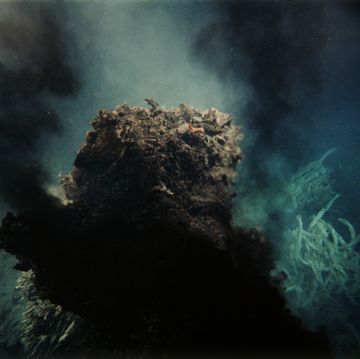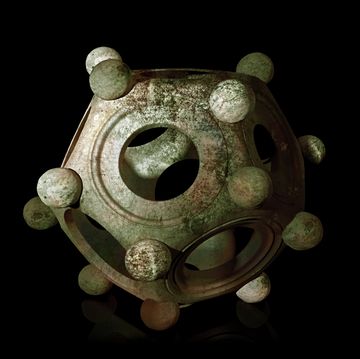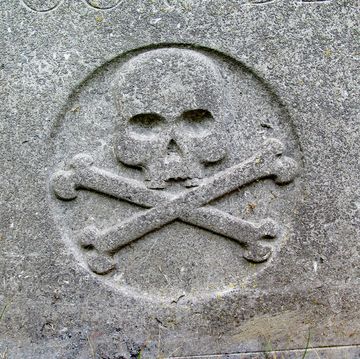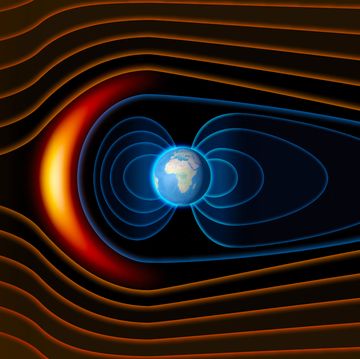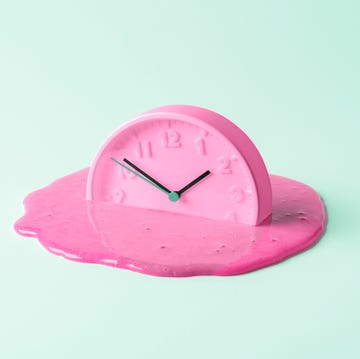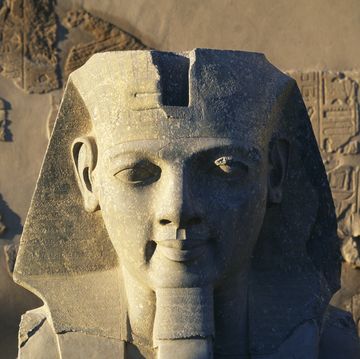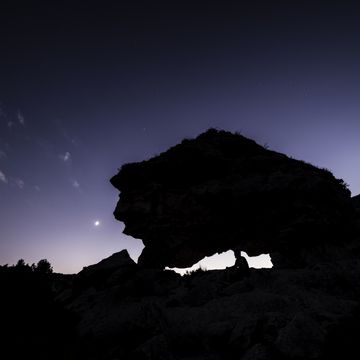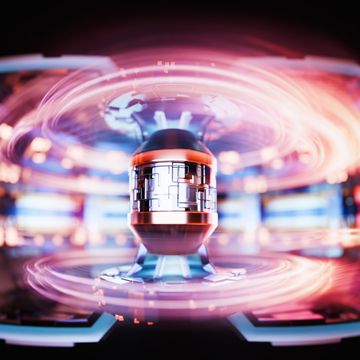Ed. note, March 17, 2015: This excellent piece from Adam Savage was originally published in 2007, but we wanted to revisit the classic film in light of the upcoming 'Blade Runner' sequel and this fantastic roundup of models from the making of the original film.
Twenty-five years ago, the Ridley Scott film Blade Runner became an instant science fiction classic. Set in a sodden, squalid Los Angeles of 2019, the neo-noir masterpiece influenced a generation of filmmakers and video-game designers. Long before I teamed up with Jamie Hyneman to form the MythBusters, I was a special-effects modelmaker, and Scott's cyberpunk gem almost instantly became the most important film in the canon of movies I love.
I'm still such a big Blade Runner fan that I watch it at least once every 18 months. I also own pretty convincing replicas of the "blade runner blaster" wielded by Harrison Ford's world-weary former cop Rick Deckard. The source material was a Steyr Mannlicher .222 target rifle magazine cover, with a Bulldog .44 carriage underneath. I can't get enough of this prop. Now, I want a working one.
In Blade Runner's dystopian near future, replicants, or genetically engineered humanoids, do the hard work on off-world colonies. After a bloody mutiny, the androids are forbidden from coming to Earth — on pain of death. So when six rogue replicants return home, they must be "retired" — hunted down and killed — and Ford's Deckard, once a top replicant hunter, or "blade runner," is pulled out of his own retirement to do the job.
I worked on Star Wars Episodes I and II, on the Matrix films, on AI and Terminator 3; yet 25 years later there are ways in which Blade Runner surpasses anything that's been done since. Watching the theatrical release DVD at home with PM reminded me of Scott's genius for creating stunning effects with simple technology.
Virtual World
Watch this opening pan across the Los Angeles skyline — there's nearly nothing else like it. This is something I think Ridley Scott does better than almost any other director. Whether he's shooting a fantastical movie like Alien (1979), or a realistic one like Black Hawk Down (2001), you always know where you are in the movie's physical space. Blade Runner is unmatched by any other sci-fi film in terms of feeling like you're in an environment you understand. This isn't the kind of sci-fi where everyone wears silver suits. It's lived-in science fiction — a world.
DROP ZONE Some of the film's most dramatic settings are real-life locales, like L.A.'s 1893 Bradbury Building, where the final faceoff takes place. "I made a pilgrimage there and rode the elevators," Savage says.
Model Mastery
You have to remember, Blade Runner was made years before digital effects became common. Today, CGI [computer-generated imagery] is becoming a mature art form, but even now there are times you just can't beat doing some effects like these "in camera." Most of these cityscapes are a combination of models and traditional matte paintings. For the aerial shots they used a set about 12 ft. wide, and those towers you see belching fire are about 12 in. high. They're made of etched brass and model parts and use thousands of tiny, grain-of-wheat light bulbs like you'd find in a dollhouse. They filmed some of the fireballs in the parking lot behind the studio, and for others they used stock footage from the 1970 Antonioni film, Zabriskie Point.
SKY PATROL To create the flying police cars, Savage says, "they used different scale models depending on the shot. Some were full size, some about 20 in. long, and some even smaller for distance shots."
Motion Control
I love the scenes where you're moving through the city and see video billboards the size of buildings. (Today we have billboards like that in Times Square — so, the movie wasn't far off!) The normal way to create these effects would be to build a miniature, shoot it and then composite in the billboards and other elements in postproduction.But they did all of these effects in camera, which even back then was a much more complex way to execute them. The key to this is a motion-control camera — a smart robot, basically — that moves through the city on the same track, over and over again. It's accurate to within a couple thousandths of an inch. They did separate passes, rewinding the film each time and then re-exposing it to add each new element. So they did one pass for the lights on a building, another for the video projection, then a pass for the rain lighting and so on — as many as 16 passes in some cases. And all that layering is what makes you feel you're in a totally complete world, yet one that's completely alien.
Timeless Design
Scott hired an incredible art department, including Syd Mead, who started out designing cars for Ford. Some scenes have almost a 1930s look to them, while others are totally futuristic. But all the technology they designed — like flying cop cars they call "spinners" — meshes perfectly with your idea of this world. It's one of the reasons this movie has stayed at the top of my list. It just doesn't date.
DARK CITY "There's nothing like these cityscapes," Savage says of Blade Runner's dystopian L.A. Shooting these urban landscapes — complete with video billboards — took as many as 16 camera passes.



